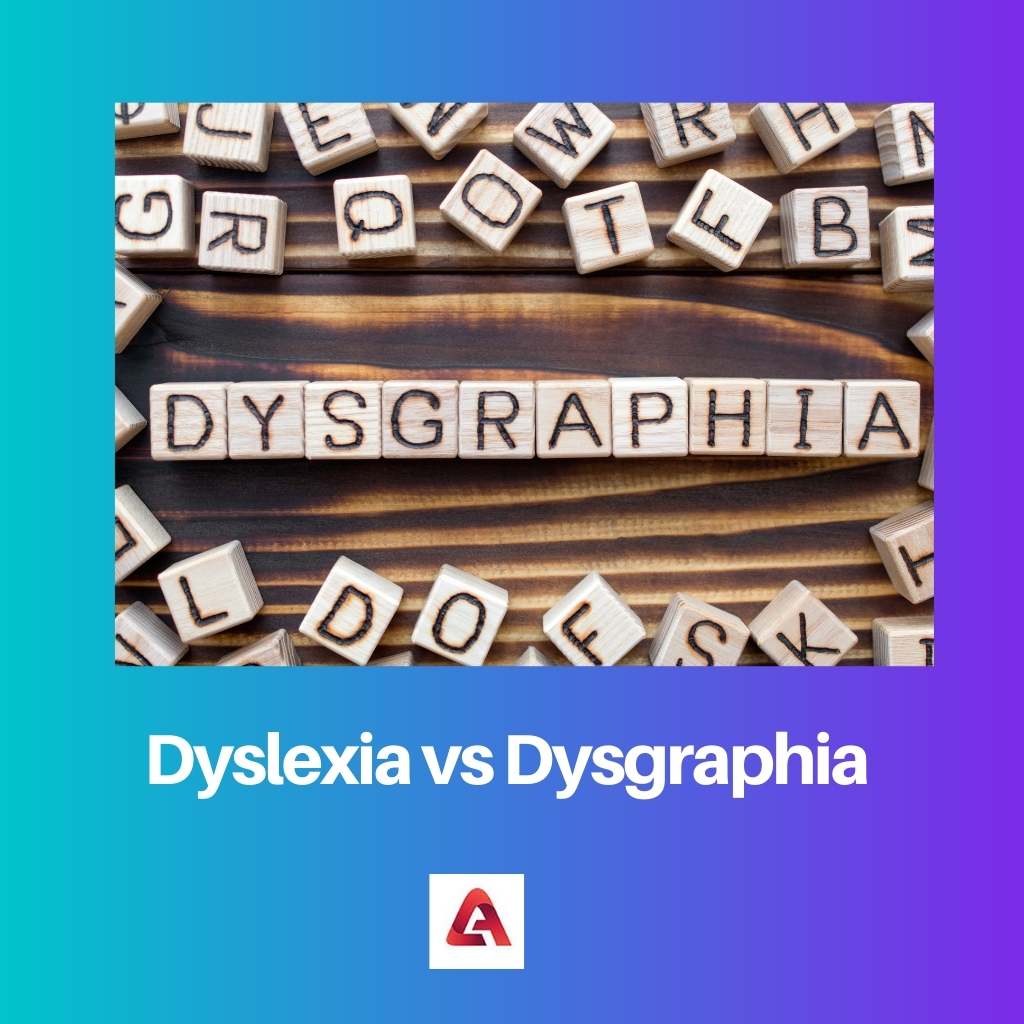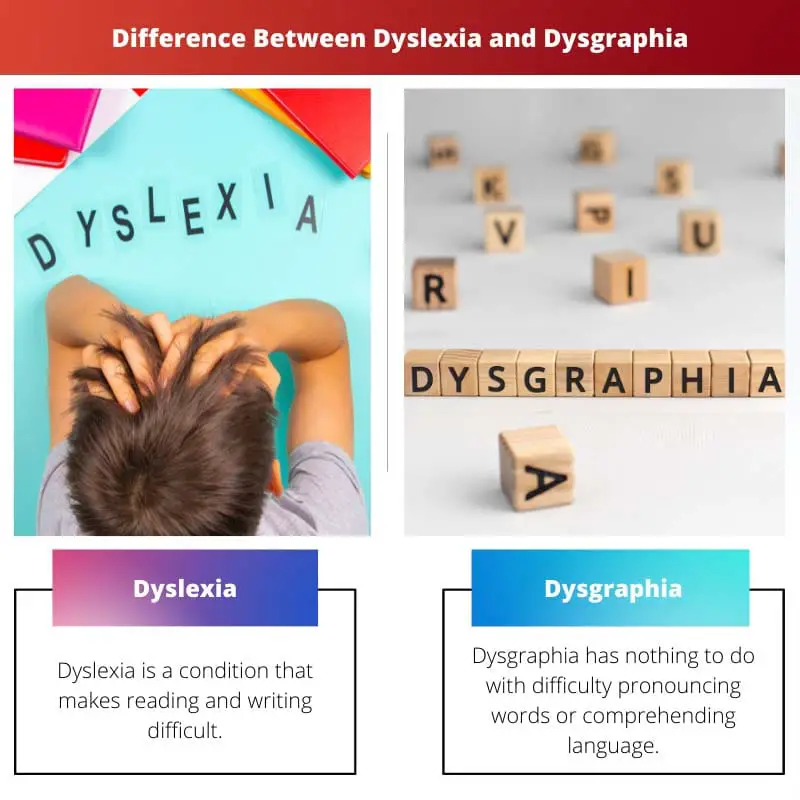Dyslexia is a language-based learning disability that specifically impairs one’s ability to read. Dysgraphia is a neurological disorder that impacts one’s ability to write or draw.
Symptoms of dyslexia are different than those of dysgraphia.
People with dyslexia have trouble associating sounds with letters, whereas people with dysgraphia may have trouble recognizing certain letters or forming shapes for letters.
Treatment for each condition varies significantly depending on the symptom(s) severity. A person with mild symptoms may only need tutoring, while those with more severe symptoms will need individualized therapy.
Dyslexia is difficulty reading, and Dysgraphia is difficulty writing. Both are a result of a deficit in the phonological core (or the system of phonemes) within the brain.
Just like people can have a deficit in any one of the phonological skills – phonological awareness, phonological encoding, or memory – they can have a weakness in one phonological processing or another, back the way up to two.
Usually, a person has difficulty reading and difficulty writing. But it could be the case that they have difficulty writing and difficulty reading. Difficulties in either one of the two will affect the other skills.
People experience dyslexia or dysgraphia for a variety of reasons, including illness, stroke, brain injury, and low IQ.
Key Takeaways
- Dyslexia is a learning disorder affecting reading and language processing, while dysgraphia impacts writing skills.
- Dyslexia manifests as difficulties with phonological processing and decoding, whereas dysgraphia causes problems with handwriting, spelling, and expressing ideas in writing.
- Both disorders require specialized educational support and interventions to help affected individuals succeed academically.
Dyslexia vs Dysgraphia
Dyslexia is a neurological disorder that affects the brain’s ability to process language, characterized by difficulty with word recognition. Dysgraphia is a disorder that affects a person’s ability to write coherently and effectively, affecting both written expression and fine motor skills.

Dyslexia is a condition that makes reading and writing difficult. It is caused by an issue with how the brain processes words, letters, or numbers.
People who suffer from dyslexia can also have difficulty understanding what they read. Dyslexia is a specific learning disability that primarily affects one’s reading ability.
It also hinders the ability to spell words and (but not always) hampers the ability to write words.
Dysgraphia has nothing to do with difficulty pronouncing words or comprehending language. Rather, dysgraphia directly impacts the ability to write letters and other symbols on paper.
People with dysgraphia may also have dyslexic tendencies, but not all people with dysgraphia are dyslexic. Dysgraphia is a disability that prevents the person from producing written work.
The difference between dyslexia and dysgraphia is that people with dyslexia can still write, whereas some with dysgraphia cannot write at all.
Comparison Table
| Parameters of Comparison | Dyslexia | Dysgraphia |
|---|---|---|
| Meaning | Learning issues in which individuals have an extremely difficult time with reading. | Learning issue in which individuals struggle composing appropriately |
| Symptoms | Issues in recalling what words mean and they might have late improvement and trouble in speaking | Trouble composing the letters and changing over sounds into the right words when composing |
| Diagnosis | In childhood, once the kid begins school and the perusing and language is assessed through many tests | When a kid is diagnosed by a psychologist who will give the kid different tests to decide how well and effectively they can write |
| Causes | Identified with issues that emerged in the cerebrum during improvement; concern language, for example, Wernicke and Broca’s regions are believed to be broken | By an issue with language |
| Risk Factors | Acquired frequently, so kids naturally introduced to families where dyslexia is available are bound to have the condition | Also co-occur with other learning issues, so having ADHD or dyslexia might expand the danger of dysgraphia |
| Treatment | Guidance for how words sound, and how sounds combine to shape words | Word related treatment; might be useful in dysgraphia and kids can be educated to hold the pen in a more agreeable position |
What is Dyslexia?
Dysgraphia is a difficulty in motor skills that affects one’s ability to write. The two are confused because they are related to specific skills but not each other.
It co-occurs with difficulty in writing and spelling, but not always. Dyslexia is an inherited condition that makes it difficult for a person to read or write.
Dyslexia causes difficulty with the use of language, reading, and spelling words. It goes unrecognized at first, but symptoms may be seen in early childhood.
There are many types of dyslexia, but most people with dyslexia have difficulties with one or more of these areas. Dyslexia is a condition that makes it difficult to see letters in the correct order.
It also causes problems with reading, spelling, and writing. A person with dyslexia, also known as a reading disability, will have difficulty in learning how to read words.
This is different from a person with dysgraphia, which involves difficulty in writing words.
Dyslexia occurs when the individual has trouble understanding or remembering letters, words, or sounds that are not related to this person’s first language.
What is Dysgraphia?
Dysgraphia is a neurological disorder that causes difficulty with handwriting and spelling for some people but not others. Graphic school benefits of dyslexia.
Dysgraphia causes difficulty with written expression because thought processes are not translated to paper as they are in the brain. Dysgraphia is difficulty in learning how to write words correctly.
Dysgraphia is a specific learning disorder that affects someone’s ability to write legibly and presents as illegible scribblings.
Dysgraphia is a difficulty in motor skills that affects one’s ability to write. Dysgraphia causes difficulty with written expression because thought processes are not translated to paper as they are in the brain.
Dysgraphia is a difficulty in motor skills that affects one’s ability to write. Dysgraphia is an impairment of writing. Like dyslexia, it can be lifelong, but it affects handwriting instead of speech or reading skills.
It is caused by an injury to the brain’s left hemisphere, where letter formation occurs.
The ability to form letters can be impaired because of damage to the brain’s motor cortex or its pathways going from the right side of the brain to the left side.
Main Differences Between Dyslexia and Dysgraphia
- The difference between dysgraphia and dyslexia is that dyslexia causes difficulty with the comprehension of written words, while dysgraphia causes difficulty with typing or writing words and spelling.
- One of the most obvious distinctions between dyslexia and dysgraphia is that dysgraphia is difficulty with handwriting, while dyslexia is difficulty reading. Dyslexia is a cognitive learning disability that affects how sufferers process language. They can be a little bit slower in reading, spelling, and writing.
- Dysgraphia is a learning disability that causes problems with writing, drawing, cutting, pasting, and other fine motor tasks. Because while dyslexia primarily affects written work, dysgraphia primarily affects reading work. So while dyslexia primarily impacts the ability to read, dysgraphia primarily impacts the ability to write.
- The difference between dyslexia and dysgraphia is that dyslexia includes problems with a sound-symbol association and difficulties with word retrieval and reading comprehension. Dysgraphia, on the other hand, is a writing impairment that can show up in different forms, including difficulty forming letters, words, or sentences. The main difference between the two is that people who have dyslexia are more likely to have difficulties with reading.
- Dyslexia is characterized by an individual’s inability to read for meaning, while dysgraphia is characterized by an individual’s inability to write correctly or legibly. Although researchers have not determined the specific differences in the two conditions, it has been noted that dyslexics have better verbal memory skills than non-dyslexics, while dysgraphic have better spatial visualization skills.

- https://www.sciencedirect.com/science/article/pii/S0010945208001330
- https://www.tandfonline.com/doi/abs/10.1080/02643298608253362

This post provides a very clear explanation of the differences between Dyslexia and Dysgraphia. I appreciate the focus on the symptoms and diagnoses of both conditions.
This article offers a comprehensive comparison between dyslexia and dysgraphia. It really helps me understand the distinct characteristics and causes of these conditions.
This article provides a great summary of dyslexia and dysgraphia, making it easier for readers to understand the difference between the two conditions.
This post is so helpful in clarifying the comparison between dyslexia and dysgraphia. I appreciate how it explains the key takeaways and the comparison table in detail.
The comprehensive explanation of dyslexia and dysgraphia provided in this article is truly informative and has expanded my knowledge about these conditions.
The detailed information about the symptoms and risk factors of dyslexia and dysgraphia are enlightening.